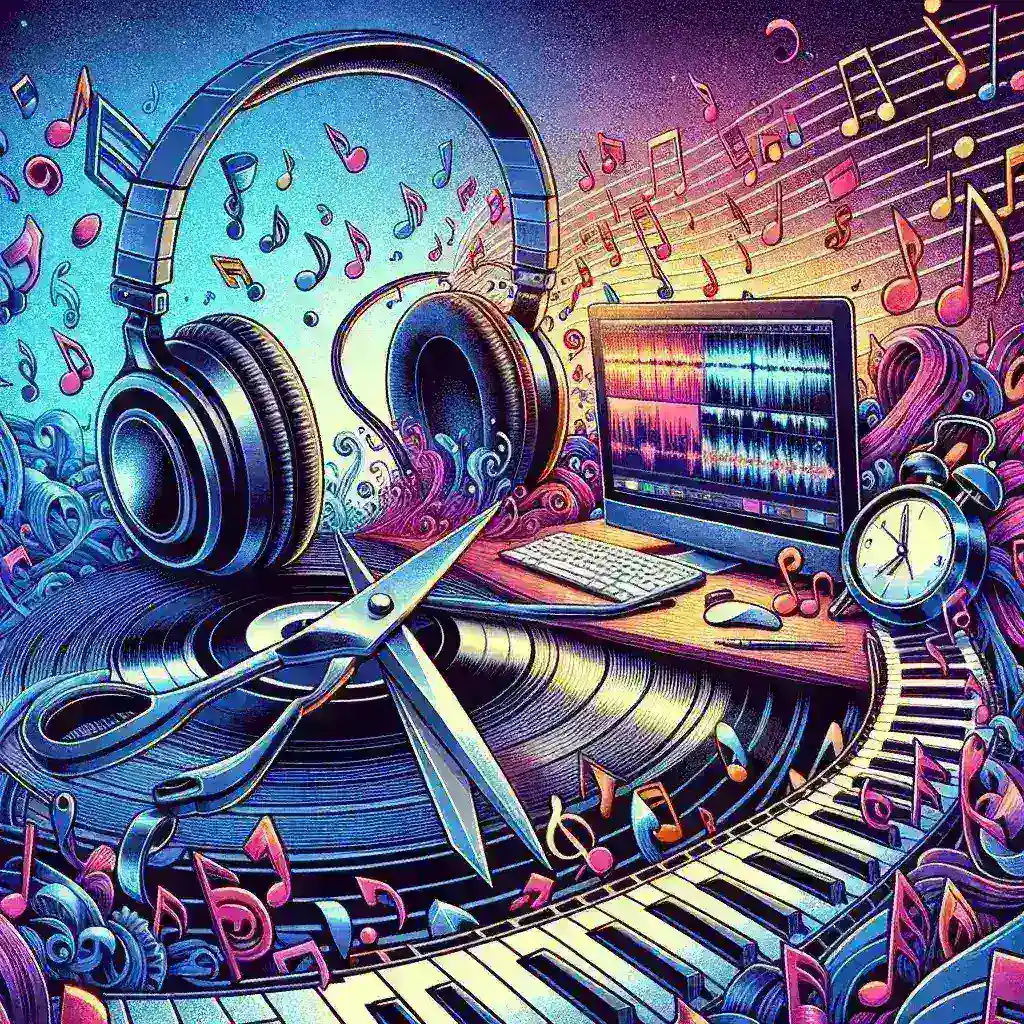Understanding the Fundamentals of Beat-Based Editing
Cutting scenes precisely on beat represents one of the most powerful techniques in video editing, transforming ordinary footage into compelling visual narratives that resonate with audiences on a visceral level. This rhythmic approach to editing creates an invisible thread that connects viewers emotionally to the content, making every transition feel natural and purposeful.
The concept of beat-based editing extends far beyond simply matching cuts to musical downbeats. It encompasses understanding the emotional rhythm of your story, the natural cadence of dialogue, and the visual flow that guides viewer attention. When executed masterfully, this technique creates a seamless viewing experience where technical precision serves the greater narrative purpose.
The Psychology Behind Rhythmic Editing
Human beings are inherently rhythmic creatures, with our hearts beating approximately 60-100 times per minute and our brains naturally seeking patterns in visual and auditory stimuli. Professional editors leverage this biological predisposition by creating cuts that align with these natural rhythms, resulting in content that feels intuitively correct to viewers.
Research in neuroscience has demonstrated that rhythmic editing activates the same neural pathways associated with music appreciation, creating a multisensory experience that enhances memory retention and emotional engagement. This scientific foundation explains why music videos, commercials, and film sequences that employ precise beat cutting often achieve greater impact and memorability.
Essential Tools and Software for Precision Beat Cutting
Modern video editing software provides sophisticated tools specifically designed for rhythmic editing workflows. Professional-grade applications like Adobe Premiere Pro, Final Cut Pro, and DaVinci Resolve offer audio waveform visualization, automatic beat detection, and timeline snapping features that streamline the beat-cutting process.
Audio Waveform Analysis
The visual representation of audio waveforms serves as the foundation for precise beat cutting. These graphical displays reveal the amplitude and frequency characteristics of your soundtrack, making it possible to identify kick drums, snare hits, and other rhythmic elements with surgical precision. Learning to read waveforms effectively transforms abstract musical concepts into concrete visual markers.
Advanced editing platforms now incorporate spectral frequency displays that separate different instrumental elements into distinct visual layers. This technology allows editors to isolate specific instruments or vocal tracks, making it easier to identify the most appropriate cutting points for different types of content.
Automatic Beat Detection Technology
Contemporary editing software increasingly features artificial intelligence-powered beat detection algorithms that can automatically identify rhythmic patterns within audio tracks. While these tools provide excellent starting points, experienced editors understand that manual refinement remains essential for achieving truly professional results.
The most effective workflow combines automated beat detection with human artistic judgment, using technology to handle the heavy lifting while maintaining creative control over the final timing decisions. This hybrid approach maximizes efficiency without sacrificing the nuanced timing that distinguishes amateur work from professional productions.
Developing Your Rhythmic Intuition
Successful beat cutting requires more than technical proficiency; it demands the development of an intuitive understanding of musical timing and visual rhythm. This skill develops through deliberate practice and careful analysis of professionally produced content across various genres and styles.
Training Your Ear for Musical Elements
Begin by listening to music with focused attention on different rhythmic elements. Practice identifying the primary beat, secondary rhythmic patterns, and subtle timing variations that create musical interest. Musicians often recommend starting with simple, clearly defined genres like electronic dance music before progressing to more complex arrangements found in jazz or progressive rock.
Develop the ability to feel music physically, not just hear it intellectually. Many professional editors report that they can sense the optimal cutting points through bodily rhythm before consciously identifying them analytically. This somatic awareness becomes increasingly important when working with subtle or unconventional musical arrangements.
Visual Rhythm Recognition
Video content possesses its own inherent rhythm independent of any musical soundtrack. Camera movements, actor gestures, and environmental changes all contribute to the visual cadence that skilled editors learn to recognize and manipulate. Understanding these visual rhythms allows for more sophisticated editing decisions that consider both audio and visual elements simultaneously.
Practice analyzing films and television shows with the sound muted, focusing exclusively on the visual rhythm created by cuts, camera movements, and on-screen action. This exercise develops sensitivity to the non-musical rhythmic elements that contribute to effective storytelling.
Advanced Techniques for Professional Results
Professional-level beat cutting involves sophisticated techniques that go beyond basic rhythm matching. These advanced approaches consider factors such as emotional pacing, narrative structure, and audience psychology to create editing that serves the broader creative vision.
Syncopation and Rhythmic Variation
While cutting directly on the beat creates a strong rhythmic foundation, incorporating syncopated cuts and rhythmic variations prevents the editing from becoming monotonous or predictable. Professional editors strategically place cuts slightly ahead of or behind the beat to create tension, surprise, or emphasis at key narrative moments.
This technique requires deep understanding of musical theory and careful consideration of the emotional impact of each timing choice. A cut that arrives slightly early might create anticipation, while a delayed cut could emphasize the weight or importance of a particular moment.
Cross-Cutting and Parallel Rhythm
Advanced beat cutting often involves coordinating multiple storylines or visual elements within a single rhythmic framework. This technique, known as cross-cutting or parallel editing, allows editors to maintain rhythmic continuity while shifting between different locations, characters, or time periods.
Successful parallel rhythm editing requires careful planning during the pre-production phase, ensuring that all footage elements can be integrated seamlessly within the chosen musical framework. This approach is particularly effective in action sequences, montages, and dramatic climaxes where multiple story elements converge.
Common Challenges and Solutions
Even experienced editors encounter specific challenges when attempting to achieve precise beat cutting. Understanding these common obstacles and their solutions can significantly improve the efficiency and quality of your editing workflow.
Dealing with Tempo Changes
Musical compositions frequently feature tempo variations, key changes, and dynamic shifts that can complicate the beat-cutting process. Professional editors develop strategies for maintaining rhythmic continuity across these transitions, often using techniques such as gradual timing adjustments or strategic placement of longer shots to accommodate musical changes.
When working with live musical performances or recordings with natural tempo fluctuations, consider using time-stretching tools to create more consistent timing while preserving the musical character of the original performance.
Balancing Rhythm with Narrative Requirements
The most challenging aspect of beat cutting involves situations where strict rhythmic adherence conflicts with narrative necessities. Professional editors must develop judgment for determining when to prioritize musical timing versus story clarity, often finding creative solutions that serve both requirements simultaneously.
This balance requires experience and artistic sensitivity, as there are no universal rules for resolving these conflicts. The best approach typically involves experimenting with multiple solutions and selecting the option that best serves the overall project goals.
Workflow Optimization and Best Practices
Developing an efficient workflow for beat cutting significantly impacts both the quality of your final product and the sustainability of your editing practice. Professional editors employ systematic approaches that maximize creative time while minimizing technical obstacles.
Pre-Production Planning
Successful beat cutting often begins during the planning phase, with editors and directors discussing rhythmic concepts before filming begins. This collaboration ensures that footage is captured with appropriate pacing and coverage to support the intended editing style.
Consider creating detailed timing charts that map musical elements against planned shot sequences. This preparation allows for more efficient shooting schedules and reduces the likelihood of discovering coverage gaps during post-production.
Project Organization and Asset Management
Organize your project files with beat cutting in mind, creating clearly labeled bins for different types of shots and maintaining detailed notes about timing relationships. Professional editors often create specialized organizational systems that facilitate quick access to specific shot types during the intensive creative process of rhythmic editing.
Develop consistent naming conventions for your cuts and sequences that reflect their rhythmic relationships to the source material. This organization becomes particularly important when working on longer projects or when collaborating with other editors.
Measuring Success and Continuous Improvement
The effectiveness of beat cutting can be evaluated through both technical metrics and audience response. Professional editors develop sensitivity to the subtle indicators that distinguish successful rhythmic editing from technically correct but emotionally flat results.
Technical Precision Versus Emotional Impact
While precise timing is essential, the ultimate measure of successful beat cutting lies in its emotional impact on viewers. The most technically perfect edit means nothing if it fails to enhance the storytelling or emotional engagement of the content.
Develop the habit of viewing your work with fresh eyes, ideally after taking breaks that allow you to experience the content from a viewer’s perspective rather than an editor’s technical viewpoint. This practice helps identify areas where technical precision might be compromising emotional effectiveness.
Learning from Professional Examples
Study the work of renowned editors known for their rhythmic precision, analyzing their techniques across different genres and contexts. Pay particular attention to how these professionals balance technical accuracy with creative expression, noting the subtle choices that distinguish masterful work from merely competent execution.
Consider creating a personal library of exemplary beat cutting examples that you can reference during your own projects. This collection serves as both inspiration and a practical resource for solving specific technical challenges.
Future Trends and Technological Developments
The field of beat cutting continues to evolve with advances in artificial intelligence, machine learning, and real-time processing capabilities. Understanding these emerging trends positions editors to take advantage of new tools while maintaining the human creative judgment that remains essential to exceptional work.
Machine learning algorithms are becoming increasingly sophisticated at recognizing complex rhythmic patterns and suggesting cut points that align with both musical and visual elements. However, the most successful implementations of these technologies will likely remain those that augment rather than replace human creative decision-making.
Virtual and augmented reality platforms present new challenges and opportunities for rhythmic editing, requiring editors to consider spatial audio and 360-degree visual elements within traditional timing frameworks. These emerging mediums will likely drive the development of new techniques and approaches to beat cutting in the coming years.
Conclusion
Mastering the art of cutting scenes precisely on beat requires a combination of technical skill, musical understanding, and artistic sensitivity. This comprehensive approach to rhythmic editing serves not just as a technical exercise but as a fundamental tool for enhancing storytelling and creating emotional connections with audiences. Through deliberate practice, careful study of professional examples, and ongoing experimentation with new techniques and technologies, editors can develop the expertise necessary to create compelling content that resonates with viewers on both conscious and subconscious levels. The investment in developing these skills pays dividends across all types of video content, from music videos and commercials to narrative films and documentary projects.

